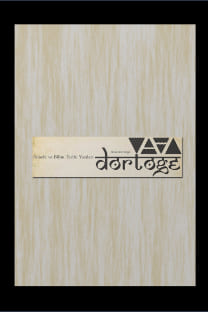ÖKLİT DIŞI GEOMETRİYE GİDEN YOLDA İSLAM DÜNYASI MATEMATİKÇİLERİ
Öklid, Elementler, 5. postulat, Öklid dışı geometriler
Euclides, Elements, 5th postulate, Non Euclidean Geometries,
___
- Alpay. Şafak. (1996). “Paralellik Aksiyomu Üzerine”. Matematik Dünyası (I). s. 2-6.
- Aslan. İrem. (2012) Orta Çağ İslam Dünyasında V. Postulat Geleneği. Yayımlanmamış Yüksek Lisans Tezi. Ankara Üniversitesi. Ankara.
- Besthorn ve Heiberg. (1997). “Euclidis Elementa Ex Interpretatione Al- Mathematics and Astronomy. ed. Fuat Sezgin. Frankfurt am Main: Publications of the Institute for the History of Arabic-Islamic Science. s. 14-15.
- Bonola. Roberto. (1955). Non Euclidean Geometry. New York: Dover Publications.
- Dilgan. Hamit. (1964). Şair Matematikçi Ömer Hayyâm. İstanbul: Şirketi Mürettibiye Basımevi.
- Euclid. (1952). “The Thirteen Books of Euclid’s Elements”. çev. T. L. Heath. Great Books of the Western World. Chicago: Encyclopaedia Britannica.
- Gregorian ve Rosenfeld. (1981). “Thabit ibn Qurra”. Dictionary of Scientifi c Biography. ed. Hermann Staudinger ve Giuseppe Veronese. New York: Charles Scribner’s Sons. c. 13. s. 288-295.
- Heath. Thomas. (1921). A History of Greek Mathematics. London: Oxford At the Clarendon Press.
- Heath. Thomas. (1931). A Manual of the Greek Mathematics. London: Oxford At the Clarendon Press.
- Heath. Thomas. (1956). The Thirteen Books of Euclid’s Elements. New York: Dover Publications.
- İbn Nedim. (1970). El Fihrist. çevb.ayard Dodge. NewYork & London: Columbia University Press.
- Katz. Victor. J. (1993). A History of Mathematics (an Introduction). New York: Harper Collins College Publishers.
- Müftüoğlu. Ferruh. (1993). “Cevherî”. İslam Ansiklopedisi. İstanbul: Türkiye Diyanet Vakfı. c. 7. s. 458.
- Nasr. Seyyed Hossein. (1981). “Nasıreddîn el-Tûsî”. Dictionary of Scientifi c Biography. ed. Hermann Staudinger ve Giuseppe Veronese. New York: Charles Scribner’s Sons. c. 13. s. 508-514.
- Proclus. (1992). A Commentary on the First Book of Euclid’s Elements. çev.Glenn R. Morrow. Princeton N. J.: Princeton University Press.
- Rashed. Roshdi. (1996). Encyclopedia of the History of Arabic Science; Mathematics and the Physical Sciences. London ve New York: Routledge.
- Rosenfeld. B. A. (1988). A History of Non-Euclidean Geometry Evolution of the Concept of a Geometric Space. New York: Springer-Verlag.
- Rosenfeld. B. A. İhsanoğlu. E. (2003). Mathematics Astronomers and other Scholars of Islamic Civilisation and Their Works (7th-9th c.). İstanbul: IRCICA.
- Sabra. A. I. (1968). “Thabit ibn Qurra on Euclid’s parallels postulate”. Jounal of the Warburg and Courtauld Institues. S. 31. London. s. 12-32.
- Sabra. A. I. (1969). “Simplicius’s Proof of Parallels Postulate”. Jounal of the Warburg and Courtauld Institues. S. 32. London. s. 1-24.
- Sabra. A. I. (1981). “Al-Jawharî”. Dictionary of Scientifi c Biography. ed. Iamblichus ve Karl Landsteiner. New York: Charles Scribner’s Sons. c. 7. s. 79-80.
- Sabra. A. I. (1981). “Al Nayrizi”. Dictionary of Scientifi c Biography. ed. S. G. Navashin ve W. Piso. New York: Charles Scribner’s Sons. c. 10. s. 5-7.
- Sabra. A. I. (1994). Optics. Astronomy and Logic. Hampshire: Variorum.
- Scott. J. F. (1981). “İbn Al-Haytham”. Dictionary of Scientifi c Biography. ed. Jean Hachette ve Joseph Hyrtl. New York: Charles Scribner’s Sons. c. 6. s. 189-210.
- Smith. David Eugene. (1935). “Euclid Omar Khayyâm and Saccheri”. Scripta Mathematica. S. 3. NewYork. s. 5-10.
- Smith. David Eugene. (1958). History of Mathematics. NewYork: Dover Publications.
- Yıldırım. Cemal. (1988). Matematiksel Düşünce. İstanbul: Remzi Kitabevi.
- Youschkevitch ve Rosenfeld. (1981). “Al Khayyâmi”. ed. Iamblichus ve Karl Landsteiner. Dictionary of Scientifi c Biography. New York: Charles Scribner’s Sons. c. 7. s. 323-331.
- ISSN: 2146-7064
- Yayın Aralığı: Yılda 2 Sayı
- Başlangıç: 2012
- Yayıncı: Nobel Akademik Yayıncılık
MICHEL FOUCAULT-KELİMELER VE ŞEYLER ÜZERİNE
Furkan Bediî KUZU, Michel Foucaultkelimeler Ve ŞEYLER
OSMANLI DEVLETİ’NİN YENİLİKLERE YAKLAŞIMI ÜZERİNE BİR DENEME: BİRGİVİ VE BİD’AT
OSMANLI DEVLETİ’NİN YENİLİKLERE YAKLAŞIMI ÜZERİNE BİR DENEME: BİRGİVİ VE BİD’AT
BİLİM TARİHİ VE BUGÜNÜN PROBLEMLERİ
BİLİM SOSYOLOJİSİ VE AYDIN SAYILI’DA BİLİM TARİHİNİN SOSYOLOJİK BOYUTU
BİLİM TARİHİNİN TEMEL PROBLEMLERİNDEN BİRİ OLARAK YÖNTEM VE NEWTON’UN KONUYA YAKLAŞIMI
Seda ÖZSOY, Bilim Tarihinin TEMEL
BİLİM TARİHİNİN TEMEL PROBLEMLERİNDEN BİRİ OLARAK YÖNTEM VE NEWTON’UN KONUYA YAKLAŞIMI
